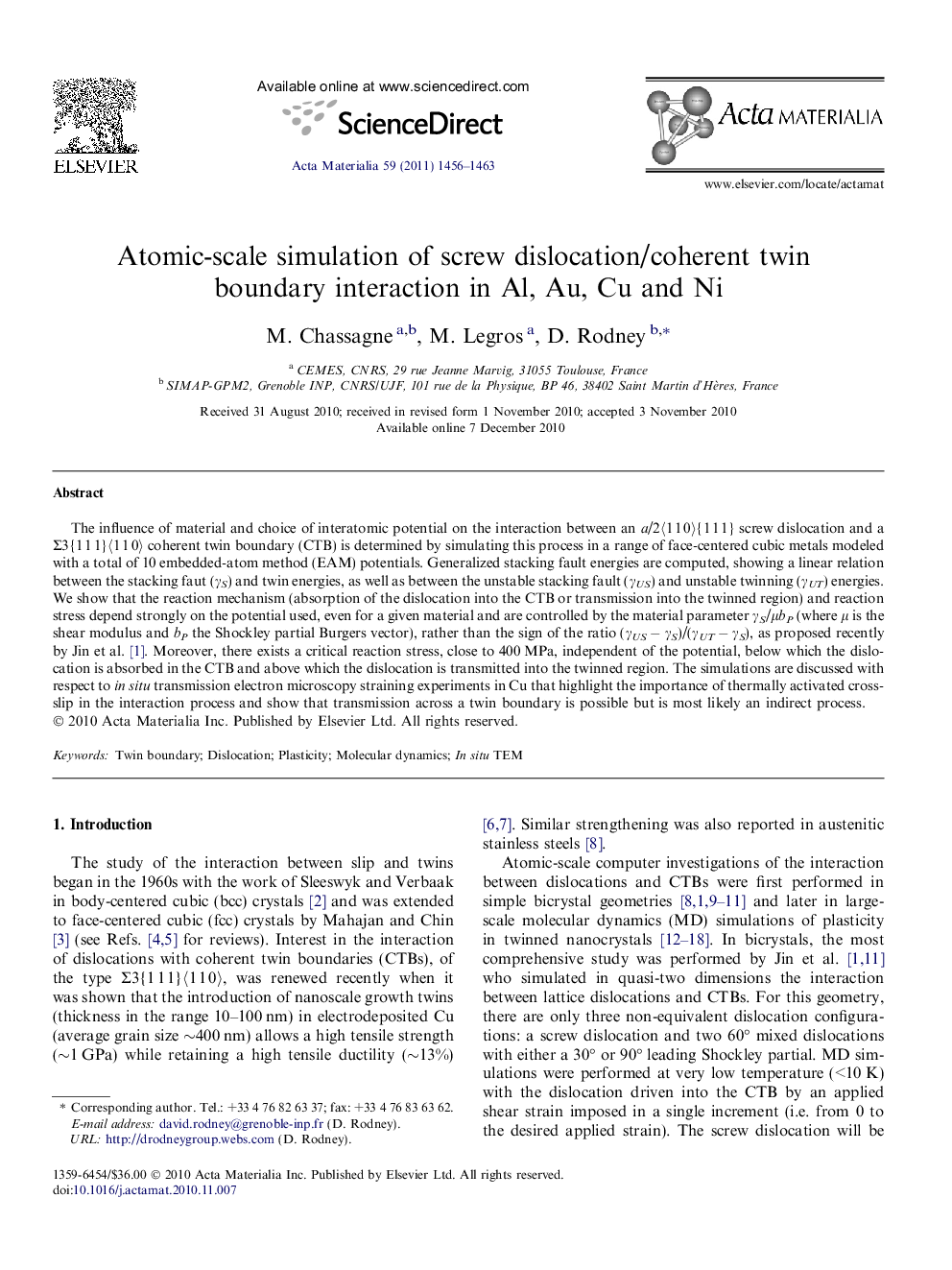| کد مقاله | کد نشریه | سال انتشار | مقاله انگلیسی | نسخه تمام متن |
|---|---|---|---|---|
| 10620600 | 988645 | 2011 | 8 صفحه PDF | دانلود رایگان |
عنوان انگلیسی مقاله ISI
Atomic-scale simulation of screw dislocation/coherent twin boundary interaction in Al, Au, Cu and Ni
دانلود مقاله + سفارش ترجمه
دانلود مقاله ISI انگلیسی
رایگان برای ایرانیان
کلمات کلیدی
موضوعات مرتبط
مهندسی و علوم پایه
مهندسی مواد
سرامیک و کامپوزیت
پیش نمایش صفحه اول مقاله

چکیده انگلیسی
The influence of material and choice of interatomic potential on the interaction between an a/2ã1 1 0ã{1 1 1} screw dislocation and a Σ3{1 1 1}ã1 1 0ã coherent twin boundary (CTB) is determined by simulating this process in a range of face-centered cubic metals modeled with a total of 10 embedded-atom method (EAM) potentials. Generalized stacking fault energies are computed, showing a linear relation between the stacking faut (γS) and twin energies, as well as between the unstable stacking fault (γUS) and unstable twinning (γUT) energies. We show that the reaction mechanism (absorption of the dislocation into the CTB or transmission into the twinned region) and reaction stress depend strongly on the potential used, even for a given material and are controlled by the material parameter γS/μbP (where μ is the shear modulus and bP the Shockley partial Burgers vector), rather than the sign of the ratio (γUS â γS)/(γUT â γS), as proposed recently by Jin et al. [1]. Moreover, there exists a critical reaction stress, close to 400 MPa, independent of the potential, below which the dislocation is absorbed in the CTB and above which the dislocation is transmitted into the twinned region. The simulations are discussed with respect to in situ transmission electron microscopy straining experiments in Cu that highlight the importance of thermally activated cross-slip in the interaction process and show that transmission across a twin boundary is possible but is most likely an indirect process.
ناشر
Database: Elsevier - ScienceDirect (ساینس دایرکت)
Journal: Acta Materialia - Volume 59, Issue 4, February 2011, Pages 1456-1463
Journal: Acta Materialia - Volume 59, Issue 4, February 2011, Pages 1456-1463
نویسندگان
M. Chassagne, M. Legros, D. Rodney,